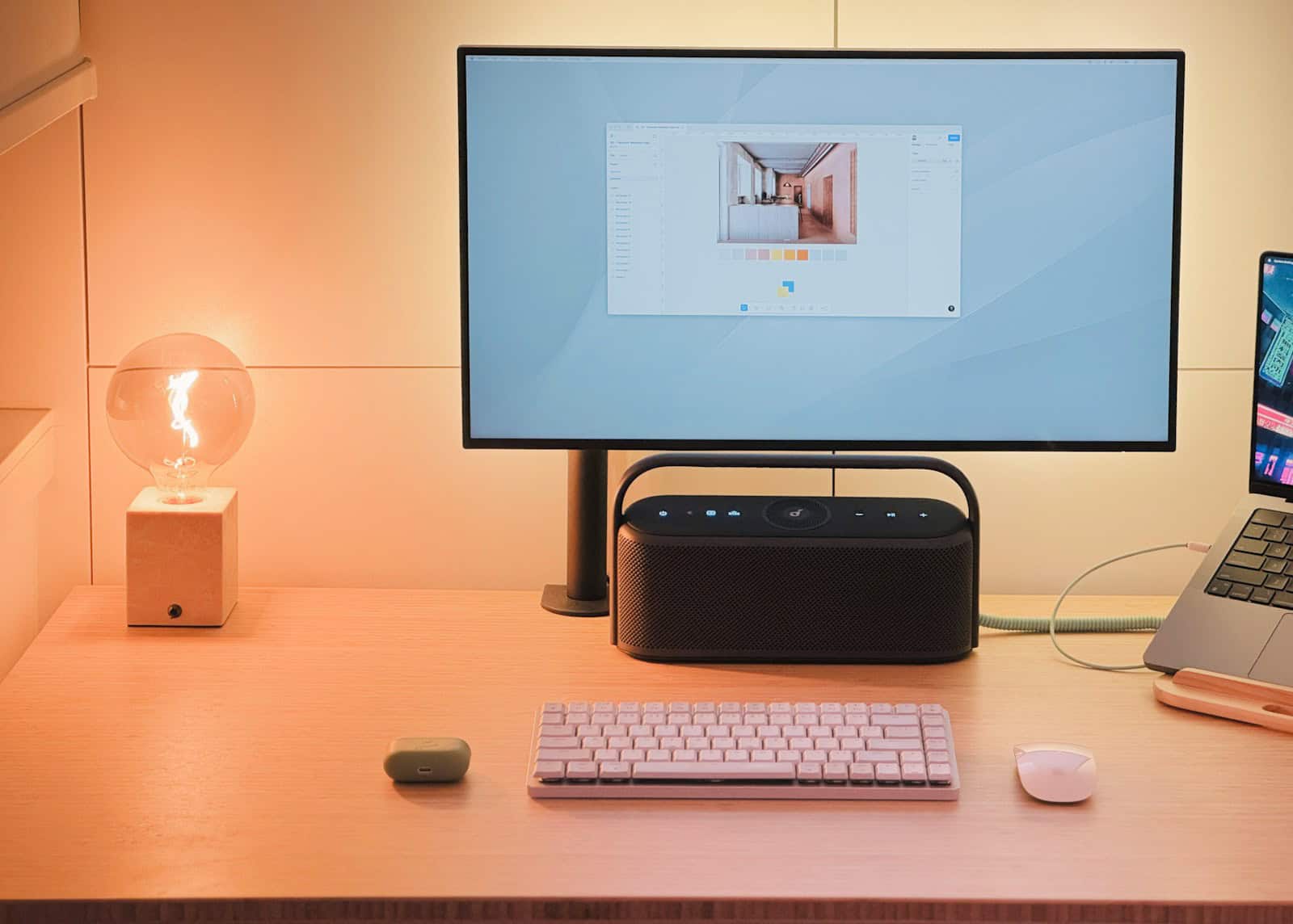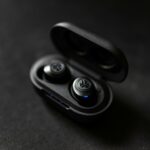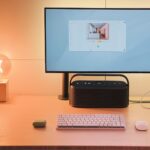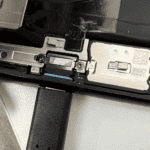Connecting a Bluetooth speaker to your monitor can enhance your audio experience significantly. You can easily pair your Bluetooth speaker with your monitor in just a few simple steps. This setup allows you to enjoy better sound quality while watching videos, playing games, or listening to music on your monitor.
Many modern monitors come with built-in Bluetooth capabilities. If yours doesn’t, don’t worry. You can still connect a Bluetooth speaker using an adapter. This small device plugs into your monitor’s USB port and adds Bluetooth functionality.
Once connected, you’ll notice a big improvement in sound quality compared to most built-in monitor speakers. Bluetooth speakers offer richer bass, clearer highs, and often louder volume. They also give you more flexibility in speaker placement for optimal audio.
| Connection Method | Pros | Cons |
|---|---|---|
| Built-in Bluetooth | Easy setup, no extra hardware | Limited to newer monitors |
| USB Bluetooth Adapter | Works with any monitor, affordable | Requires a free USB port |
| HDMI Audio Extractor | High-quality audio output | More complex setup, extra cables |
Before You Start
Not all monitors have built-in Bluetooth. You’ll need to check your monitor’s specs or settings menu to confirm.
If your monitor doesn’t have Bluetooth, you can still connect a Bluetooth speaker using a Bluetooth transmitter (a small device that plugs into your monitor or PC).
🔌 Option 1: If Your Monitor Has Built-in Bluetooth
Step 1: Enable Bluetooth on the Monitor
- Open the Settings or Audio menu on your monitor (usually accessible via the on-screen display buttons).
- Look for Bluetooth, Wireless Audio, or Speaker Settings.
- Turn Bluetooth ON.
Step 2: Put Your Bluetooth Speaker in Pairing Mode
- Hold the Bluetooth or Power button on your speaker until the indicator light starts flashing.
- This means it’s discoverable.
Step 3: Pair the Devices
- On your monitor, select Add Bluetooth Device or Pair New Device.
- Choose your speaker from the list.
- Wait for the confirmation message or sound that pairing is complete.
Step 4: Set the Speaker as Default Audio Output
- In the monitor’s Audio Output Settings, make sure your Bluetooth speaker is selected as the default sound output.
🎧 Option 2: If Your Monitor Does NOT Have Bluetooth
You can still connect a Bluetooth speaker using a Bluetooth transmitter or your computer’s Bluetooth.
Method A: Use a Bluetooth Transmitter
- Plug the transmitter into your monitor’s audio out port (3.5mm jack, RCA, or optical).
- Power on the transmitter (some use USB power).
- Put both the transmitter and your speaker in pairing mode.
- Once connected, your monitor’s audio will play through the Bluetooth speaker.
Method B: Connect via Your Computer
If your monitor is just a display (no built-in sound):
- Pair your Bluetooth speaker directly with your PC or laptop.
- Go to your computer’s Sound Settings → Output Device → select your Bluetooth speaker.
- The monitor will handle visuals, while your computer sends sound to the speaker.
⚙️ Troubleshooting Tips
- No sound? Check that the monitor’s audio output is set to Bluetooth or external speaker.
- Audio delay? Bluetooth can introduce slight lag; using a low-latency transmitter (aptX LL) helps.
- Speaker not pairing? Reset both devices and try pairing again.
- Monitor has no audio port? You can use an HDMI audio extractor to separate sound from the HDMI signal.
✅ Summary
| Setup Type | What You Need | How to Connect |
|---|---|---|
| Monitor with Bluetooth | None | Pair directly via monitor settings |
| Monitor without Bluetooth | Bluetooth transmitter | Plug into audio out, pair devices |
| Monitor as display only | Computer with Bluetooth | Pair speaker to computer |
For more detailed visuals and examples, check out guides like MonitorShype’s Bluetooth connection tutorial or SpeakersMag’s 3-step method.
Understanding Bluetooth Technology
Bluetooth technology enables wireless connectivity between devices. It uses radio waves to transmit data over short distances, typically up to 30 feet.
Bluetooth Capabilities and Settings
Bluetooth offers various capabilities for connecting speakers to monitors. It supports audio streaming with high-quality codecs like aptX and AAC. Most modern devices have built-in Bluetooth, but older monitors may need an adapter.
To use Bluetooth, you’ll need to access your device settings. On Windows, go to Settings > Devices > Bluetooth & other devices. For macOS, click the Apple menu > System Preferences > Bluetooth. Enable Bluetooth and make your device discoverable.
Bluetooth versions impact performance. Newer versions like 5.0 offer improved range and speed. Check your device specifications to know which version you have.
| Bluetooth Version | Range | Data Speed |
|---|---|---|
| 4.0 | 33 ft | 25 Mbps |
| 5.0 | 800 ft | 50 Mbps |
Pairing Bluetooth Devices
Pairing is the process of connecting two Bluetooth devices. To pair a speaker with your monitor:
- Turn on your Bluetooth speaker
- Put the speaker in pairing mode
- On your monitor or computer, open Bluetooth settings
- Select “Add Bluetooth or other device”
- Choose your speaker from the list of available devices
Once paired, your devices should connect automatically when in range. If you encounter issues, try resetting your Bluetooth devices or updating their firmware.
Some monitors have built-in Bluetooth. For these, you can often pair directly through the monitor’s menu system. This simplifies the setup process and reduces cable clutter.
Preparing Your Monitor for Connection
Before connecting your Bluetooth speaker to your monitor, you need to ensure your monitor is ready for the connection. This involves checking audio output options, enabling Bluetooth, and understanding how to use audio ports and adapters.
Audio Output Options in Monitors
Modern monitors often come with built-in speakers, but their audio quality may not meet your needs. Some monitors offer:
- HDMI audio output
- 3.5mm audio jack
- DisplayPort audio
- USB-C audio
Check your monitor’s manual to identify available audio outputs. If your monitor lacks built-in audio capabilities, you might need an HDMI audio extractor to separate the audio signal from the video.
| Audio Output | Pros | Cons |
|---|---|---|
| HDMI | High quality, single cable | Requires HDMI-compatible device |
| 3.5mm Jack | Universal compatibility | Separate cable needed |
| DisplayPort | High bandwidth | Less common on speakers |
| USB-C | Versatile, can charge devices | Limited availability |
Enabling Bluetooth on Your Monitor
Not all monitors have Bluetooth capability. If yours does:
- Access your monitor’s settings menu
- Find the Bluetooth option
- Toggle it on
- Put the monitor in pairing mode
For monitors without built-in Bluetooth, you can use a Bluetooth transmitter. Plug it into your monitor’s audio out port to add Bluetooth functionality.
Connecting via Audio Ports and Adapters
If your monitor lacks Bluetooth:
- Identify your monitor’s audio output port
- Choose the right cable or adapter
- Connect one end to the monitor
- Plug the other end into your speaker
For monitors with only HDMI:
- Get an HDMI audio extractor
- Connect HDMI from PC to extractor
- Connect extractor to monitor via HDMI
- Use the extractor’s audio out for your speaker
Remember to check your speaker’s input options to ensure compatibility with your monitor’s output.
Connecting Your Bluetooth Speaker to the Monitor
Connecting a Bluetooth speaker to your monitor enhances audio quality and provides a wireless setup. The process varies depending on your monitor’s capabilities and available equipment.
Standard Method for Connecting Bluetooth Speakers
To connect Bluetooth speakers to your monitor, start by enabling Bluetooth on the monitor. Access the settings menu and locate the Bluetooth option. Turn it on and select “Add Bluetooth or other Device.”
Put your Bluetooth speaker in pairing mode. This often involves pressing and holding the power button until a light blinks.
On your monitor, select the speaker from the list of available devices. Once connected, test the audio to ensure proper functionality.
If your monitor lacks built-in Bluetooth, consider using a USB Bluetooth adapter. Plug it into an available USB port on your monitor or computer.
Using Adapters for Non-Bluetooth Monitors
For monitors without Bluetooth, alternatives exist to connect external speakers. A USB sound card is one option. Plug it into your monitor’s USB port and connect your speakers using a 3.5mm cable.
Another method uses an HDMI to USB-C adapter. Connect an HDMI cable from your monitor to the adapter, then link the adapter’s USB-C port to your speaker.
For a wired connection, use a 3.5mm audio cable directly from your monitor’s audio out port to your speakers. This method often provides reliable audio quality.
Optimizing Sound Quality
To improve audio quality, adjust your monitor’s sound settings. Look for equalizer options to fine-tune bass, treble, and midrange frequencies.
Position your speakers properly. Place them at ear level and maintain an equal distance from your listening position. This creates a balanced soundstage.
Consider using an audio splitter if you want to connect multiple speakers. This allows for a more immersive audio experience.
| Connection Method | Pros | Cons |
|---|---|---|
| Bluetooth | Wireless, convenient | Potential latency issues |
| USB Sound Card | Improves audio quality | Requires available USB port |
| HDMI to USB-C | Versatile for various devices | Additional adapter needed |
| 3.5mm Cable | Simple, direct connection | Limited by cable length |
Remember to keep your Bluetooth speakers charged or plugged in for uninterrupted use. Regular updates to your monitor’s firmware can also enhance Bluetooth connectivity and overall performance.
Enhancing Your Audio Setup
Connecting your Bluetooth speaker to your monitor is just the first step. Let’s explore ways to improve your audio experience and solve common issues.
Utilizing External Amplifiers and Audio Extractors
External amplifiers can significantly boost your audio quality. They provide cleaner, more powerful sound for gaming and movie watching. To connect an amplifier:
- Use RCA cables from your monitor’s audio output to the amplifier’s input
- Connect your speakers to the amplifier’s output
For monitors without audio outputs, HDMI audio extractors can help. These devices split the audio signal from HDMI, allowing you to route sound to your amplifier or speakers separately.
Consider these popular amplifier options:
| Amplifier Model | Power Output | Connectivity |
|---|---|---|
| Fosi Audio BT20A | 100W x 2 | Bluetooth, RCA |
| SMSL SA300 | 80W x 2 | Bluetooth, USB, RCA |
| Topping MX3 | 40W x 2 | Bluetooth, USB, Optical |
Choose an amplifier based on your room size and desired volume levels.
Connecting Multiple Audio Devices
You can expand your setup by connecting multiple Bluetooth speakers. This creates a surround sound effect for immersive gaming or movie experiences. To set this up:
- Put all speakers in pairing mode
- On your computer, go to Bluetooth settings
- Connect each speaker one by one
Some operating systems allow you to group speakers for synchronized playback. Check your system’s audio settings for this feature.
For wired setups, use a multi-channel amplifier or an audio splitter. This lets you connect several speakers to your monitor or computer simultaneously.
Troubleshooting Common Bluetooth Connection Issues
Bluetooth connectivity problems can be frustrating. Here are quick fixes for common issues:
- Weak signal: Move speakers closer to your monitor or computer
- Pairing failures: Restart both devices and try pairing again
- Audio delays: Update Bluetooth drivers on your computer
- Intermittent sound: Check for interference from other wireless devices
If problems persist, try these steps:
- Remove the speaker from your device’s Bluetooth list
- Restart both the speaker and your computer
- Re-pair the devices
For stubborn issues, consider using a USB Bluetooth adapter. This can provide a stronger, more stable connection than built-in Bluetooth on some computers.
Frequently Asked Questions
Connecting Bluetooth speakers to monitors involves various methods and considerations. Different setups may require specific approaches depending on your hardware and preferences.
What are the steps to wirelessly connect a Bluetooth speaker to a computer monitor?
To connect a Bluetooth speaker to a monitor with built-in Bluetooth:
- Turn on Bluetooth in your monitor’s settings.
- Put your Bluetooth speaker in pairing mode.
- Select “Add Bluetooth or other Device” in your monitor’s menu.
- Choose your speaker from the list of available devices.
Pair the devices and enjoy wireless audio through your monitor.
Can I use a USB to connect a Bluetooth speaker to my monitor, and how?
You can use a USB Bluetooth adapter if your monitor lacks built-in Bluetooth:
- Plug the Bluetooth adapter into an available USB port on your monitor.
- Install any necessary drivers for the adapter.
- Enable Bluetooth in your monitor’s settings.
- Follow the pairing process for your Bluetooth speaker.
This method adds Bluetooth functionality to monitors without built-in Bluetooth support.
How is a Bluetooth speaker connected to a monitor using an HDMI interface?
HDMI doesn’t directly support Bluetooth audio. To use Bluetooth speakers with an HDMI-connected device:
- Connect your device (e.g., computer or gaming console) to the monitor via HDMI.
- Pair the Bluetooth speaker with the source device, not the monitor.
- Select the Bluetooth speaker as the audio output in your device’s settings.
This setup routes audio through your device rather than the monitor.
What solutions are available for connecting speakers to a monitor that lacks an audio jack?
For monitors without audio jacks:
- Use a USB sound card adapter with a 3.5mm audio output.
- Connect speakers to your computer’s audio output instead of the monitor.
- Opt for wireless speakers that connect to your source device via Bluetooth or Wi-Fi.
These options provide audio connectivity without relying on the monitor’s audio capabilities.
What are the steps to connect a Bluetooth speaker to a gaming console, such as a PS5?
To connect Bluetooth speakers to a PS5:
- Go to Settings > Devices > Bluetooth Devices on your PS5.
- Put your Bluetooth speaker in pairing mode.
- Select your speaker from the list of available devices.
- Follow on-screen instructions to complete pairing.
Note that not all Bluetooth speakers are compatible with gaming consoles.
How can I add Bluetooth audio functionality to a monitor that doesn’t have it built-in?
To add Bluetooth to a non-Bluetooth monitor:
- Purchase a Bluetooth transmitter with a 3.5mm or optical input.
- Connect the transmitter to your monitor’s audio output.
- Pair your Bluetooth speaker with the transmitter.
This method creates a wireless audio link between your monitor and Bluetooth speakers.
| Method | Pros | Cons |
|---|---|---|
| Built-in Bluetooth | Easy setup, no extra hardware | Limited to Bluetooth-enabled monitors |
| USB Bluetooth Adapter | Works with most monitors | Requires a free USB port |
| HDMI (via source device) | High-quality audio | Depends on source device Bluetooth support |
| Bluetooth Transmitter | Works with any monitor with audio out | Additional hardware cost |







